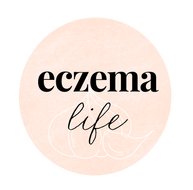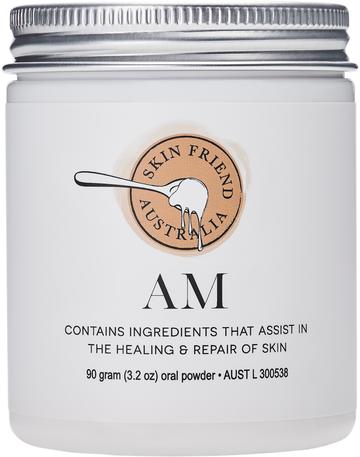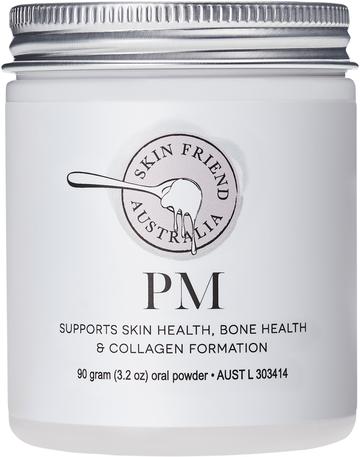Carob Mylk Chocolate

Have a skin-friendly Easter with this recipe ...
It's nearly Easter so today we made a healthy carob chocolate bar that is low in salicylates (the chemicals that can irritate eczema), caffeine-free, soy-free, gluten-free and dairy-free ... which is not an easy feat as there are no recipes we could follow that totally met our criteria.
So we made our own, using three key ingredients ...
Attempt number two was a success, and we now know that you CANNOT mix maple syrup with cocoa butter as it curdles!
My son Jack has just tested this chocolate bar (and asked for more), so it has passed the 'fussy child' test with flying colours. In fact, it has nearly gone already, so I suggest doubling this recipe to make a couple of bars to avoid missing out.
Optional ingredient
The Rice Bubbles (Rice Krispies) is an optional 4th ingredient which gives the bar a lovely subtle crunch and makes it look fancy when served. Of course, you don't have to use Rice Bubbles as there are other options (see next).
Gluten & soy intolerance
If you are gluten intolerant avoid Rice Bubbles and Rice Krispies as they are NOT gluten free and they may also contain soy ... choose a substitute such as plain puffed rice, raw cashews, or don't add any toppings as it's lovely on its own.
Notes
This recipe makes the equivalent of 1 large bar of chocolate (maybe a bit bigger - refer to the photo) but you can double this recipe for a larger batch.
We used a loaf tin lined with baking (parchment) paper as the mould, but you can use anything you like including Easter moulds or any mould that is soft or plastic (bendable) so you can pop out the chocolates once they have cooled and set.
Dark chocolate or mylk?
This lovely skin-friendly carob mylk chocolate recipe is probably more similar to dark chocolate than milk chocolate. You can make it milkier by adding a little rice milk powder or soy compound powder.
Carob, cacao or cocoa ... what is the difference?
I use carob powder - it's not trendy but it is good for your skin. Carob is caffeine-free and both low in salicylates and amines. It is naturally sweeter than cacao, it is gentle on the gut and rich in minerals including calcium. It also contains tannins.
Cacao, which is the same as cocoa/chocolate but less refined, is very rich in amines, theobromine^ and heart-palpitation-causing caffeine, AND it can affect people prone to dry skin, like me. For example, when I eat regular chocolate or worse, cacao as it's stronger, the next day my skin feels tight and dry and my face may even peel (not as bad as TSW but you get the idea) AND I sometimes break out.
^Theobromine is a heart stimulant like caffeine, a diuretic and vasodilator, which means it widens the blood vessels, causes more blood to flow to your skin... So if you have TSW (red skin syndrome), where your blood vessels are already excessively dilated, cacao/chocolate can make your skin flush even more. Carob does not contain theobromine or caffeine so it is safe to use during TSW recovery.
So I don't recommend cacao powder. I also have an issue with cacao being basically the same thing as cocoa powder, only rebranded and marketed to sound healthier. I kinda feel like it's a bit of a con... It's from the exact same plant, just maybe a bit less refined but I'm not sure it really is less refined or if this is more hype. Just my opinion.
Is cacao butter the same thing?
Cocoa butter (cacao butter) is used in this recipe but don't confuse this with the powder version, it's not quite the same thing.
Cacao butter is cocoa butter but with a trendy name and heftier price tag. Both are a pale buttery colour and smell divine like chocolate. But they are different to the brown powder called cacao powder and cocoa powder. Cocoa butter is low in salicylates, and moderate-high in amines (depending on the cocoa butter that is being used). It also has only trace amounts of caffeine and theobromine so it is unlikely to affect blood vessel dilation. So for those who tolerate moderate-high amines, this chocolate mylk recipe will be a lovely treat.
Types of sugars you can use
We recommend Maple Sugar for this recipe (NOT maple syrup or other liquid sugars as they curdle). You can find maple sugar from some health food bulk stores or online, however often it's hard to find so here are some alternatives:
- Soft brown sugar (ensure it's fine) - this type of sugar may contain some salicylates so it would not be suitable on a low salicylate program.
- Some people use icing sugar when making home made chocolate (and it is low salicylate) so that is an option that some people find convenient, but I don't really like icing sugar and we don't recommend it as a healthy option.
- Make it sugar-free! It actually tastes like dark chocolate without the sugar. Carob is naturally sweet and with the cocoa butter it is quite lovely without sugar ... this is a great option for people who want to avoid sugar but probably not for children.

INGREDIENTS
- 1 cup cocoa butter or cacao butter (from health food shops... if ordering online, check it is food grade, not the ones used for skin care making)
- 1/2 cup carob powder (roasted usually works best as it’s darker)
- 2 tablespoons maple sugar (see notes, above, for alternatives)
OPTIONAL TOPPINGS
- about ¼ cup Rice Bubbles (puffed rice)
- a handful of raw cashew nuts, roughly chopped
METHOD
You will need a loaf tin (about 10 x 20 cms at the base or 4 x 8 inch) or a small baking tray, lined with baking paper (parchment paper). Alternatively you can use chocolate moulds to make Easter Eggs or other shapes.
Add the cocoa butter buttons to a small saucepan and heat it carefully on low to medium heat until it becomes liquid. We used the double boil method which involved using a small saucepan with about an inch of water (or a touch more) and a bowl on top of it to hold the buttons away from the direct heat. Not sure if this is really necessary but it worked well.
Then add the maple sugar and sifter carob powder and mix until dissolved. Note that grainy sugars (such as low GI sugar) do not dissolve and you will need to allow this to cool slightly then pop it into a high powered blender and blend until the sugar is smoother (if using a grainy sugar). Actually ... whatever type of sugar you use, I recommend briefly mixing it with a hand-held stick blender* or high powered blender to mix the sugar. If you are not using sugar, extra blending is not necessary. *Be safe and careful not to splash hot liquid onto yourself!
Pour the mixture onto the baking tray and spread it until even (or use moulds). If desired, sprinkle a thin layer of chopped nuts or rice bubbles evenly onto the chocolate and gently press it in if necessary. Don't use too much toppings as it's nice to have the lower layer plain chocolate, and the upper layer crunchy.
Leave it on the bench top to slowly cool down ... don’t refrigerate it yet, as a fast cool-down will discolour the chocolate so it looks a little white on top. Once it has cooled, pop it in the refrigerator briefly until it is cold. Then dislodge the chocolate and break it up into small pieces or larger triangle-style wedges as shown in our photo.
Store it in the refrigerator.
Happy Easter!
Products
At Eczema Life, we recommend nutritionist Karen Fischer's low food chemical program (The Eczema Detox) along with additive-free supplements for skin health and wellbeing. Click on the images to view more details:




